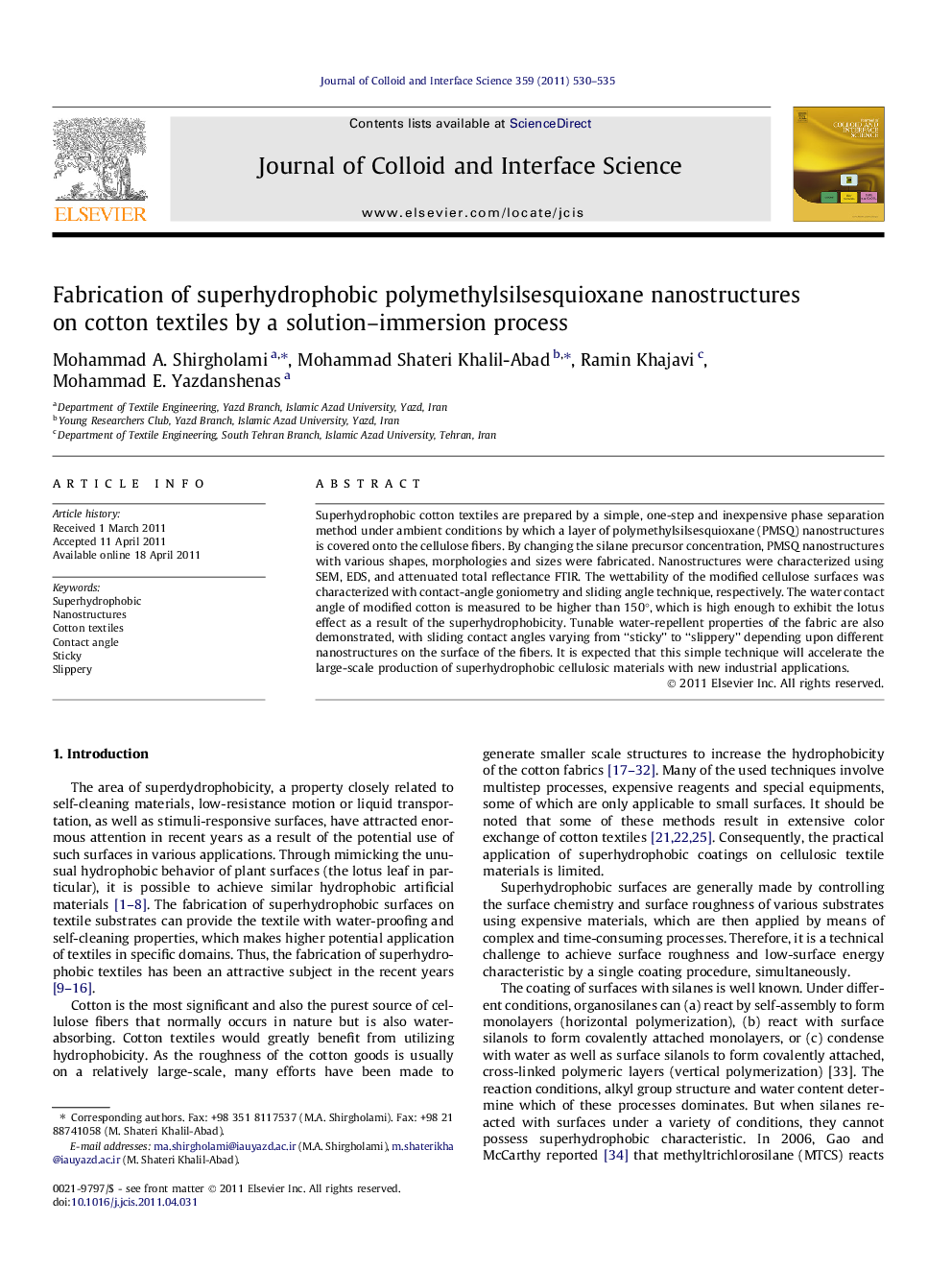| کد مقاله | کد نشریه | سال انتشار | مقاله انگلیسی | نسخه تمام متن |
|---|---|---|---|---|
| 608690 | 880606 | 2011 | 6 صفحه PDF | دانلود رایگان |

Superhydrophobic cotton textiles are prepared by a simple, one-step and inexpensive phase separation method under ambient conditions by which a layer of polymethylsilsesquioxane (PMSQ) nanostructures is covered onto the cellulose fibers. By changing the silane precursor concentration, PMSQ nanostructures with various shapes, morphologies and sizes were fabricated. Nanostructures were characterized using SEM, EDS, and attenuated total reflectance FTIR. The wettability of the modified cellulose surfaces was characterized with contact-angle goniometry and sliding angle technique, respectively. The water contact angle of modified cotton is measured to be higher than 150°, which is high enough to exhibit the lotus effect as a result of the superhydrophobicity. Tunable water-repellent properties of the fabric are also demonstrated, with sliding contact angles varying from “sticky” to “slippery” depending upon different nanostructures on the surface of the fibers. It is expected that this simple technique will accelerate the large-scale production of superhydrophobic cellulosic materials with new industrial applications.
SEM image (left) and 5 μL water droplet image (right) for polymethylsilsesquioxane nanofilaments-covered cotton fibers.Figure optionsDownload high-quality image (59 K)Download as PowerPoint slideHighlights
► Superhydrophobic cotton fabrics by formation of polymethylsilsesquioxane nanostructures.
► Formation of polysiloxane nanostructures with different shapes and sizes.
► Tunable water-repellent properties of the fabric, from “sticky” to “slippery”.
Journal: Journal of Colloid and Interface Science - Volume 359, Issue 2, 15 July 2011, Pages 530–535